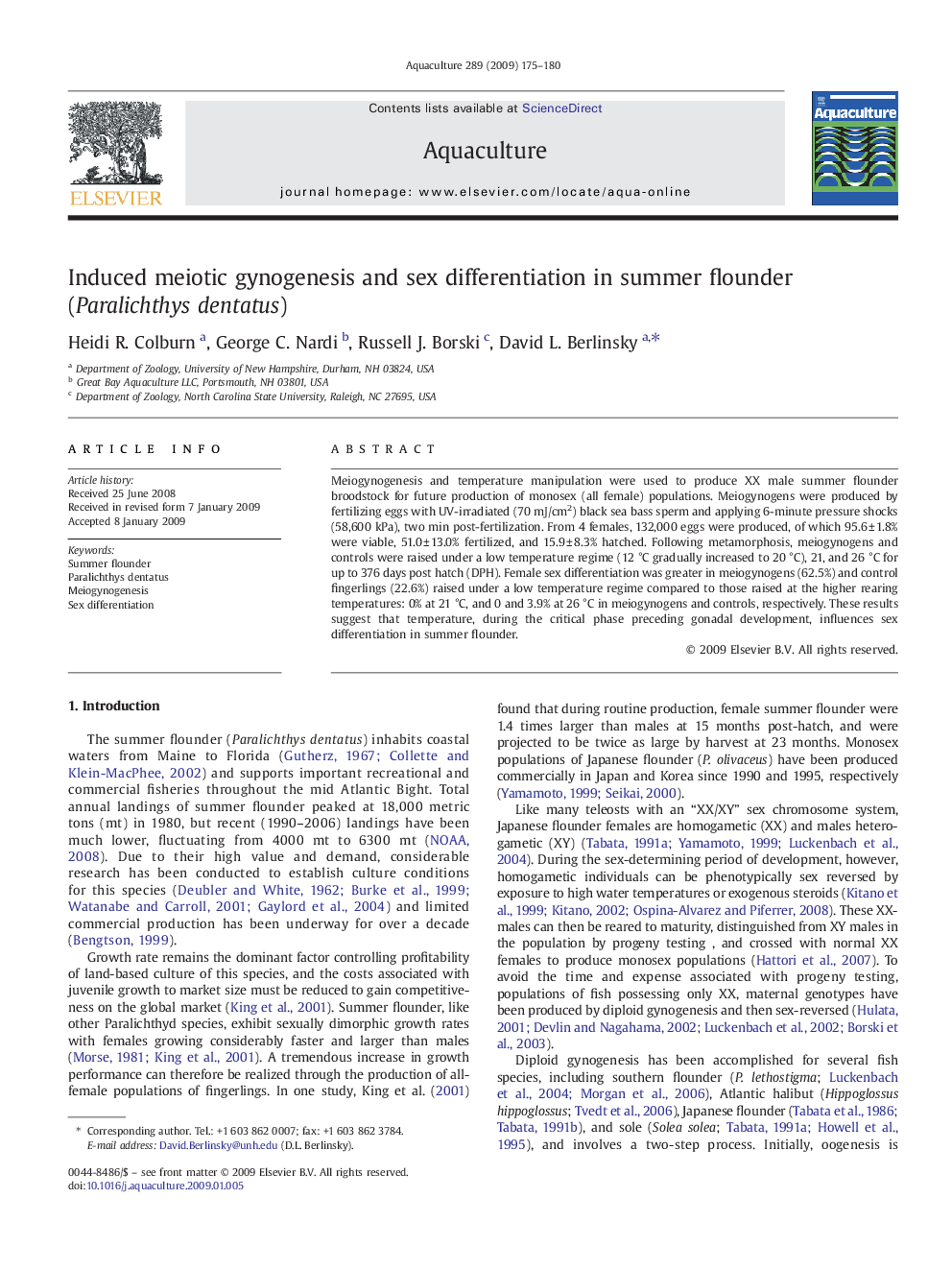| Article ID | Journal | Published Year | Pages | File Type |
|---|---|---|---|---|
| 2424336 | Aquaculture | 2009 | 6 Pages |
Meiogynogenesis and temperature manipulation were used to produce XX male summer flounder broodstock for future production of monosex (all female) populations. Meiogynogens were produced by fertilizing eggs with UV-irradiated (70 mJ/cm2) black sea bass sperm and applying 6-minute pressure shocks (58,600 kPa), two min post-fertilization. From 4 females, 132,000 eggs were produced, of which 95.6 ± 1.8% were viable, 51.0 ± 13.0% fertilized, and 15.9 ± 8.3% hatched. Following metamorphosis, meiogynogens and controls were raised under a low temperature regime (12 °C gradually increased to 20 °C), 21, and 26 °C for up to 376 days post hatch (DPH). Female sex differentiation was greater in meiogynogens (62.5%) and control fingerlings (22.6%) raised under a low temperature regime compared to those raised at the higher rearing temperatures: 0% at 21 °C, and 0 and 3.9% at 26 °C in meiogynogens and controls, respectively. These results suggest that temperature, during the critical phase preceding gonadal development, influences sex differentiation in summer flounder.
